The New Sounds of Music in Restaurants
Enabled by technology and led by a younger generation of restaurateurs and patrons, music in restaurants has evolved from being barely noticeable to becoming an integral part of the experience – both a statement about a restaurant’s personality and part of the energy that many desire.
The digitization of music has been a game changer for how restaurants access and manage music – streaming services (Pandora, Rhapsody, Beats Music, Spotify) and custom music providers that create playlists curated by DJs (Prescriptive Music, The Playlist Generation, Mood Media, Gray V) are mainstream. One of the benefits of working with such music providers is that music is “normalized” – meaning there are no big jumps in volume and tempo (which often happens with streaming services). Plus DJs can build playlists that don’t repeat for several days or weeks based on music genres, artists, and songs that operators request; databases that are searchable let operators find specific songs, such as a customer’s favorite.
“When customers come in and the first thing they hear is music that they know, it makes them comfortable – a good beat creates a great mood,” says Tom Kaplan, Senior Managing Partner, Wolfgang Puck Fine Dining Group, hq, Los Angeles, CA. He says they work with Prescriptive Music to create playlists that managers choose from to keep the music interesting and fresh. Several years ago when they opened Cut in Beverly Hills, CA, and Las Vegas, NV, Tom says they ditched light jazz in favor of playing Led Zeppelin, Pink Floyd, and The Who. (The playlists of Wolfgang Puck and his partners appear on the company’s website with links to iTunes.) At JJ’s Red Hots, Charlotte, NC, Owner Jonathan Luther agrees that music helps deliver a great guest experience. He works with Mood Media to create playlists because he says that as much he’d like to, he doesn’t have time to handpick songs. “The one criterion is that the music must be multigenerational. Our guests range from eight to 80 years old, so I want to play upbeat music that appeals to all,” he says. “There’s lots of variety within our custom music program and I like the fact that I can play it for months at a time without fear of it getting stale.” When they opened Dirty Habit, San Francisco, CA, Kimpton Hotel & Restaurant Group worked with The Playlist Generation. Frank Kawecki, Regional VP Operations-West Coast, Kimpton, says they took a lot of music direction from the chef, who wanted the music to have a neighborhood bar feel with songs familiar to everyone. He says, “When Neil Diamond pops up, everyone grins or nods.”
“As far as actual sound level of music…we like to think of a warm blanket of sound. My rule is don’t have music try to compete with ambient noise.” – Alec DeRuggiero, Music Supervisor, Gray V, a custom music provider
Gabriel Stulman, CEO/Founder, Happy Cooking Hospitality, New York, NY, believes in trusting the people who are working the room to choose the music and he allows staff to create playlists. “We have strict rules around types of music that can be played,” he says. Some genres are not allowed (heavy metal, hard rock hair bands), there are regulations for hip hop lyrics, and some great singers (Nina Simone, Ella Fitzgerald) may only be played up to 6pm – after that it’s time for more tempo, he feels. “I love when a waiter plugs in his iPod and I see him dancing through the dining room and customers look up and see how happy he is to be working here.”
Regardless of music style and its source, there are strong points of view about just how big a role it should play – whether it should be in the foreground or background. Gabe believes the sound level needs to be “fluid” and that if the room is packed, music should be louder to be heard above voices. “I don’t like to hear ‘gray’ sound – music should be articulate. And when you can hear a conversation from the next table the music needs to be turned up,” he says. Frank agrees that music should follow the energy of the room. He adds, “The biggest struggle is that the volume isn’t automatic, and because of this we allow bartenders to control sound levels – if it’s a rocking night, they key into that vibe.”
http://nrn.com/amexfsvoice/new-sounds-music-restaurants
Tags: restaurants
